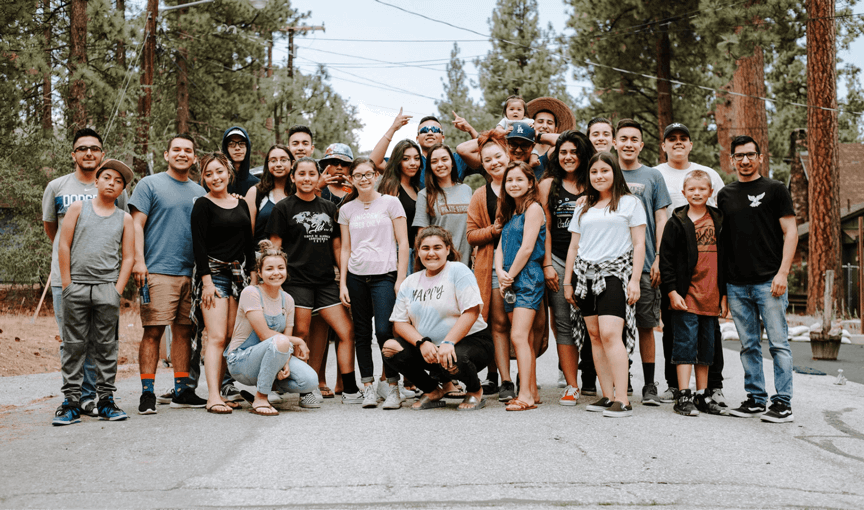Distress seasonal migration affects over 140 million people annually in India, including nearly 90 million children who face severe disruptions in their education. These children often fall through the cracks of the formal schooling system, enrolled on paper but frequently absent, leading to significant learning loss and eventual dropout. A study from Gujarat’s Saurashtra region found that 63% of children aged 6–14 from migrant families do not attend school, and 94% of children under six are not engaged in any form of early learning. LAMP addresses this largely invisible crisis by working in high-migration geographies to build a holistic, community-centered education ecosystem. The model supports migrant children through a continuum of care—ensuring access to foundational learning, remedial education, and grade-level competencies. It also works closely with families, communities, and local governments to unlock government benefits and entitlements, provide safe lodging where needed, and create long-term support structures that help children stay in school, learn meaningfully, and thrive despite the challenges of migration.
LAMP is a community-centered initiative by the American India Foundation (AIF) that ensures uninterrupted education for children affected by migration. Recognizing seasonal migration as a survival strategy for vulnerable families, LAMP mitigates its impact on children by strengthening access to quality education.
The first step in the process is a joint migration mapping exercise done in partnership with the government which identifies at-risk children. These children are then enrolled in grade-appropriate classes or Learning Resource Centres (LRCs) through the Learning Enrichment Program (LEP), focused on Foundational Literacy and Numeracy (FLN). A hub-and-spoke model supports students in Grades 1–8 via trained Education Facilitators and Shiksha Mitras (Friends of Education), who provide individualized academic support and connect schools with the community.
At the community level, AIF forms Convergence Groups comprising frontline workers, parents and panchayat leaders. These groups identify migrant children, promote retention, and build awareness about education. Each village is supported by an AIF-trained Community Mobilizer. Progress is tracked using a Community Report Card.
In cases where parents need to migrate for livelihood opportunities, LAMP arranges for children to stay in government hostels or with local caregivers, and helps families access welfare schemes, reducing their economic burden to enable continued learning and access to schools.
Since its inception in 2004, LAMP has evolved and scaled through the country focusing on education continuity of children impacted by distress seasonal migration. It began in Gujarat and Maharashtra to prevent school dropouts among migrant children. Initially, LAMP supported continuity in education through seasonal hostels in source geographies and worksite schools in destination geographies. In 2008, it piloted the LEP and expanded scope to include all children in migration-affected areas,not just those affected by migration. In 2010, LRCs were introduced in Gujarat, using a hub-and-spoke model to strengthen classroom learning, continuity of education and community engagement. By 2019, LAMP moved from directly running seasonal hostels to providing technical support to state governments on their functioning and execution.From 2021-23, LAMP built in components on socio-emotional learning, local language Teacher Language Materials(TLMs) and integrated key program elements in 2 education departments-Odisha and Jharkhand, from a systems strengthening perspective.
Now active in 17 states and 5,432 villages, LAMP has impacted 1.59 million children and trained 1,826 teachers. LAMP has won national recognition, including Best CSR Program in Education (2024), 1st Prize at ICC Social Impact Summit (2025), and state awards from Bengal and Assam. LAMP has also inspired a film on migrant children's education, featured at the UN's Migration Youth & Children Platform.
LAMP has regularly evolved to respond to the shifting realities of distress seasonal migration and its impact on children’s education. From managing seasonal hostels in its formative years to now providing technical support to state-run hostels, the program has moved towards system strengthening and sustainability. A major enhancement was the introduction of a migration survey, enabling data-driven planning, tailored to each region’s unique migration patterns. In the past five years, innovations like Makers’ Spaces and Augmented Reality and Virtual Reality (AR/VR) tools have been integrated into Learning Resource Centres to build 21st-century skills and enable experiential STEM learning. Recently the program has also expanded its scope from only working in source villages to also covering destination geographies where children migrate with families.
LAMP’s five-step model ensures continuity in education for children impacted by distress seasonal migration. It begins with migration mapping, identifying migrant-origin villages through surveys conducted with local officials, workers, and leaders. Community mobilizers and 'shiksha mitras' are recruited locally to ensure local ownership and culturally relevant delivery. Next is the identification of hub and spoke schools and the formation of a 10-member village-level Convergence Group, composed of local community workers and village elders. An experienced Education Facilitator, supported by shiksha mitras, oversees learning interventions across the schools. LRCs are then established in government schools and equipped with locally sourced materials in the vernacular language. Grades 1–2 focus on FLN through after-school remediation; Grades 3–5 combine FLN with activity-based, grade-appropriate learning; and Grades 6–8 emphasize STEM, problem-solving, and English. In parallel, LAMP also focuses on building an inclusive and supportive ecosystem by engaging families and communities through awareness on importance of education, seasonal government hostels, government entitlements, and pre-migration planning. This approach builds long-term sustainability and local ownership.
If you want to know more, please reach out to AIF and our team would be happy to share our learnings.



